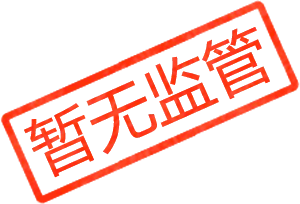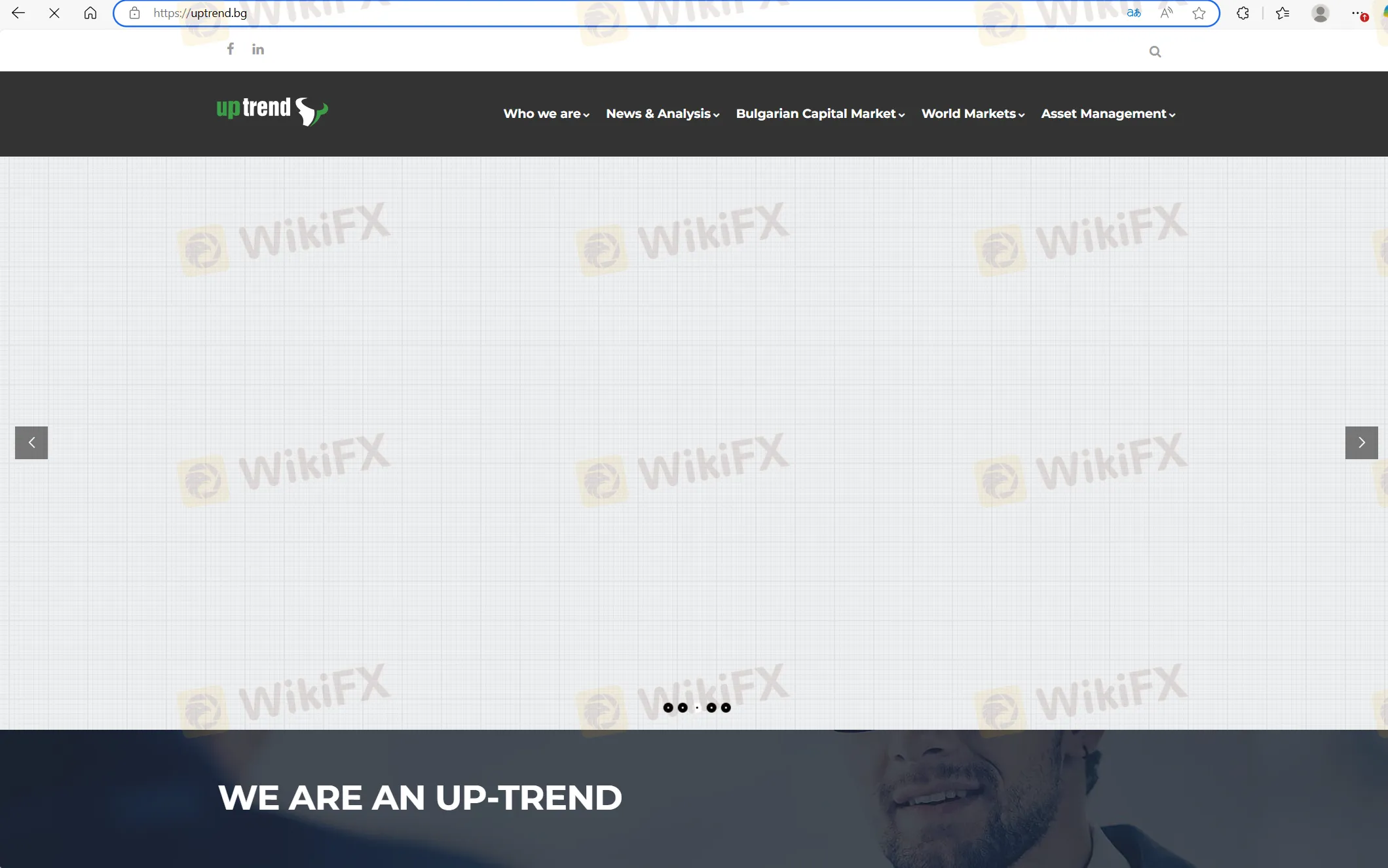基础信息
 保加利亚
保加利亚
天眼评分
 保加利亚
|
5-10年
|
保加利亚
|
5-10年
| http://uptrend.bg/
官方网址
评分指数
MT4/5鉴定
主标
UpTrend-mt4-demo.xtrade-dm.net

影响力
D
影响力指数 NO.1
 保加利亚 2.53
保加利亚 2.53
MT4/5鉴定
主标
 德国
德国影响力
D
影响力指数 NO.1
 保加利亚 2.53
保加利亚 2.53 监管信息
监管信息暂未查证到有效监管信息,请注意风险!
 保加利亚
保加利亚

正规的主标MT4/5交易商会有健全的系统服务与后续技术支持,一般情况下业务和技术都较为成熟、风险控制能力较强
 uptrend.bg
uptrend.bg 土耳其
土耳其| UP TREND 评论摘要 | |
| 成立时间 | 1997 |
| 注册国家/地区 | 保加利亚 |
| 监管 | 无监管 |
| 金融服务 | 资产管理、投资咨询、经纪服务、IPO/SPO支持、金融工具保管等 |
| 客户支持 | 电话:+359 2 815 56 60 |
| 邮箱:uptrend@uptrend.bg | |
| 地址:索非亚1407,Nikola Y. Vaptsarov大道51A,1楼 | |
Up Trend是保加利亚最早获得许可的投资中介机构之一,成立于1997年。自1998年以来,它一直是保加利亚证券交易所和中央存管机构的成员。该公司持有欧盟范围的许可证,为零售客户和机构客户提供广泛的金融服务,包括资产管理、投资咨询、经纪、IPO/SPO支持和金融工具保管。它与汤森路透、Capital IQ、彭博社和FactSet等平台合作,发布市场分析报告。总部位于保加利亚索非亚。
然而,该经纪商目前没有受到任何官方机构的良好监管,这可能降低了其可信度和信誉度,值得引起您的注意。

| 优点 | 缺点 |
| 广泛的金融服务范围 | 无监管 |
| 多年的行业经验 |
衡量经纪平台安全性最重要的因素是它是否受到正式监管。UP TREND是一家未受监管的经纪商,这意味着用户资金的安全性和交易活动并未得到有效保护。投资者应谨慎选择UP TREND。

Up Trend Ltd.为零售客户和机构客户提供广泛的投资服务,包括:
他们提供经纪服务,可访问以下内容:
| 交易工具 | 支持 |
| 股票 | ✔ |
| ETF | ✔ |
| 债券 | ✔ |
| 外汇 | ✔ |
| 大宗商品 | ✔ |
| 差价合约 | ✔ |
| 指数 | ✔ |
| 衍生品 | ✔ |
| 加密货币 | ❌ |
| 期权 | ❌ |



In my experience as a trader, the single most significant risk with UP TREND is its lack of verified regulatory oversight. Although there is mention of an EU-wide license and long-standing operation in Bulgaria since 1997, WikiFX highlights clearly that UP TREND is currently unregulated by recognized authorities. This means that, for me, any funds held with this broker would not benefit from protections typically offered by robust regulatory bodies—such as compensation schemes or clear recourse in cases of disputes or mismanagement. I’ve learned that regulation doesn’t just tick a box; it enforces standards that safeguard client assets and ensure broker integrity. When a broker operates without this layer of external accountability, both the security of my deposits and the transparency of how my trades are handled become much harder to verify. Even though UP TREND offers a full MT4 license and maintains established business partnerships, those technical or operational positives cannot substitute for strong, active regulation. Moreover, the “high potential risk” label and low independent review scores raise my personal caution further. If any issue arises, such as withdrawal delays or pricing disputes, my ability to resolve them could be severely limited. Therefore, while their range of services and experience might be appealing, for me, the absence of recognized regulatory protection is a critical drawback that cannot be ignored. I would advise approaching UP TREND with great caution and prioritizing brokers that provide transparent, recognized regulatory assurances.


From my personal experience and diligence as a forex trader, I found that UP TREND offers a maximum leverage of 1:100 for major forex pairs. Leverage is a double-edged sword in trading, enhancing both potential returns and risks. While 1:100 is generally considered relatively high—allowing traders to control larger positions with less capital—it demands careful risk management. For other asset categories on UP TREND, such as stocks, ETFs, bonds, and commodities, the available leverage decreases significantly, with options like 1:50, 1:33, 1:25, 1:10, and even as low as 1:1. This tiered approach is common in the industry, reflecting the varying volatility and liquidity profiles of different markets. For me, being able to adjust leverage is crucial, but I exercise extra caution, especially since UP TREND currently lacks official regulation. Without adequate regulatory oversight, the risks associated with high leverage and fund safety become more pronounced. In summary, while UP TREND’s leverage levels may cater to traders seeking flexibility, I always remind myself and others that elevated leverage must be treated conservatively and only used with robust risk controls.


As someone who has traded with various brokers over the years, I always consider a platform’s transparency around fees and trading costs before committing any funds. When I looked into UP TREND, I was cautious because clear details regarding their commission structure and spreads were not provided via their main channels or their summary materials. This presents a challenge from a risk management perspective, since ambiguity about costs can impact the net results of any trading strategy—especially for active traders like myself, where both commissions and spreads play a critical role. I did note that UP TREND offers a diverse range of assets, including forex, stocks, ETFs, bonds, commodities, and CFDs. In my experience, a broker’s fee schedule for such a variety can vary widely depending on the asset class, and reputable firms typically disclose clear outlines on commissions per trade, spread markups, and any potential hidden charges like inactivity fees, withdrawal costs, or custodial fees for certain assets. Given that UP TREND operates without a recognized regulatory body currently overseeing its activities, the lack of publicly accessible, detailed information on their trading fees raises concerns for me. In regulated environments, fee structures are typically scrutinized and must be fully disclosed to clients. Here, for both commission charges and spreads, prospective users are left to rely on direct inquiries or live testing to ascertain real costs—which is never ideal. For me, I always recommend proceeding extremely carefully in such cases, prioritizing transparency and regulatory safeguards above all. Without explicit information, it’s difficult to evaluate the true trading cost and make informed decisions about position sizing or strategy viability. I believe that, in matters involving real financial risk, having full clarity on all potential fees is essential for protecting oneself and trading responsibly.


In my experience with UP TREND, the areas of customer support and platform stability require a conservative approach due to several important factors highlighted during my due diligence process. One of my chief concerns stems from the broker’s lack of regulation. While UP TREND advertises a full MT4 license and an extended presence in the financial sector since 1997, the absence of oversight from any credible regulatory body introduces uncertainty—in practice, this often impacts both service reliability and the safeguarding of client interests. When interacting with their customer support, I found response times to be moderate, but I couldn’t disregard the risk associated with having no regulatory recourse if my issue escalated into a dispute. The communication channels were standard—email and phone—but lacking an independent ombudsman or regulator meant I had to place a higher trust in their internal processes, which isn’t ideal for me as risk management is always a top priority. Regarding the stability of their trading platform, UP TREND does use the widely respected MT4 infrastructure, which usually delivers robust execution speeds, and their technical integration seemed mature. However, during times of elevated market activity, I noticed occasional latency—ping times averaging between 171 and 203 milliseconds on their servers. While not disastrous, these can be significant if I’m pursuing strategies that depend on rapid order execution. For me, the peace of mind that comes with trading through a regulated broker with proven client protection mechanisms far outweighs the convenience or breadth of services that UP TREND may offer, especially when assessing core needs like stable platform access and dependable support.



请输入...